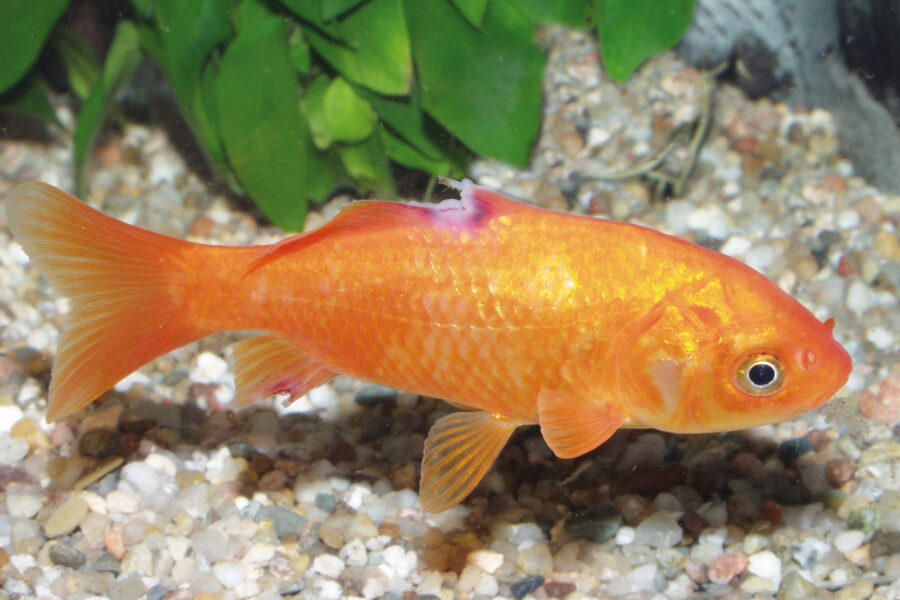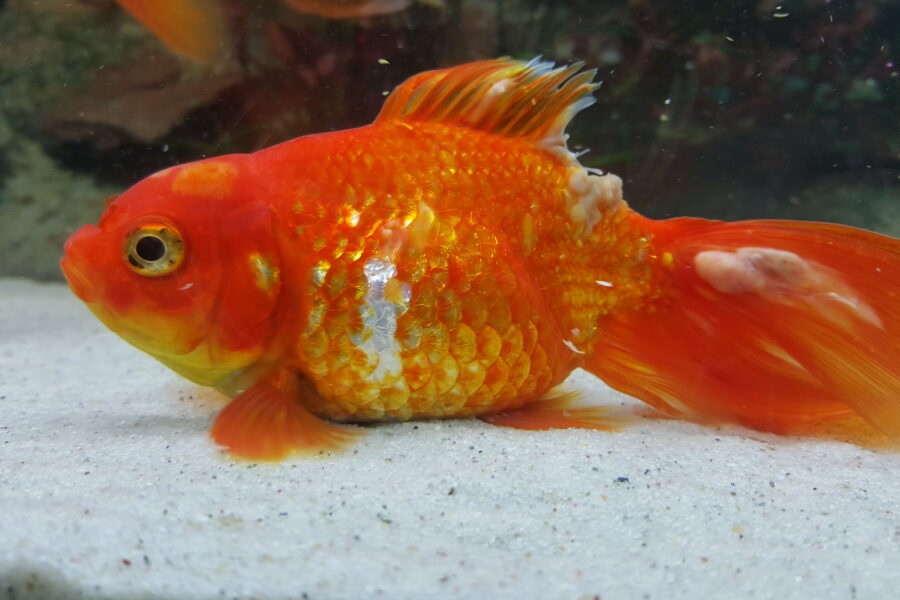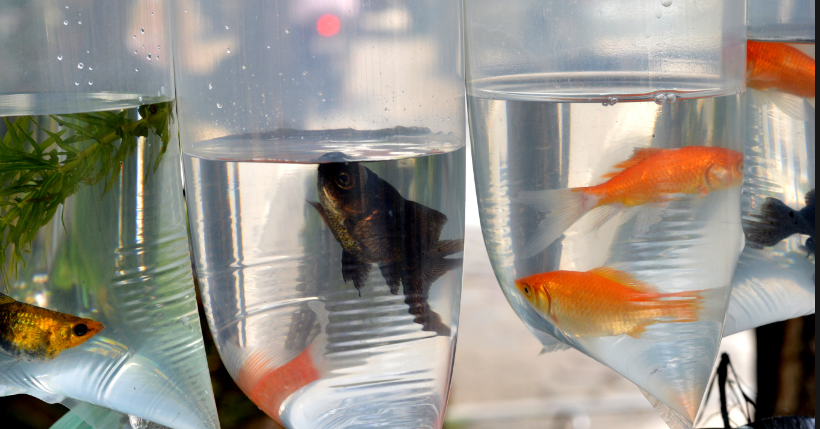
Ready to be immersed in the thrilling adventure of goldfish transportation? We’ll navigate through the treacherous waters of understanding when your gilled friend is stressed. And it’s more complex than them simply giving you the stink eye – you must learn to identify the signs!
Next, we ascend the mountain of pre-transportation preparation. It’s all fun and scales until your goldfish is belly up in a botched Tupperware container. Choosing the right container, ensuring top-notch water quality, and avoiding overfeeding are crucial steps to a successful journey. But hold onto your nets, because we’re just getting started!
Understanding Goldfish Stress
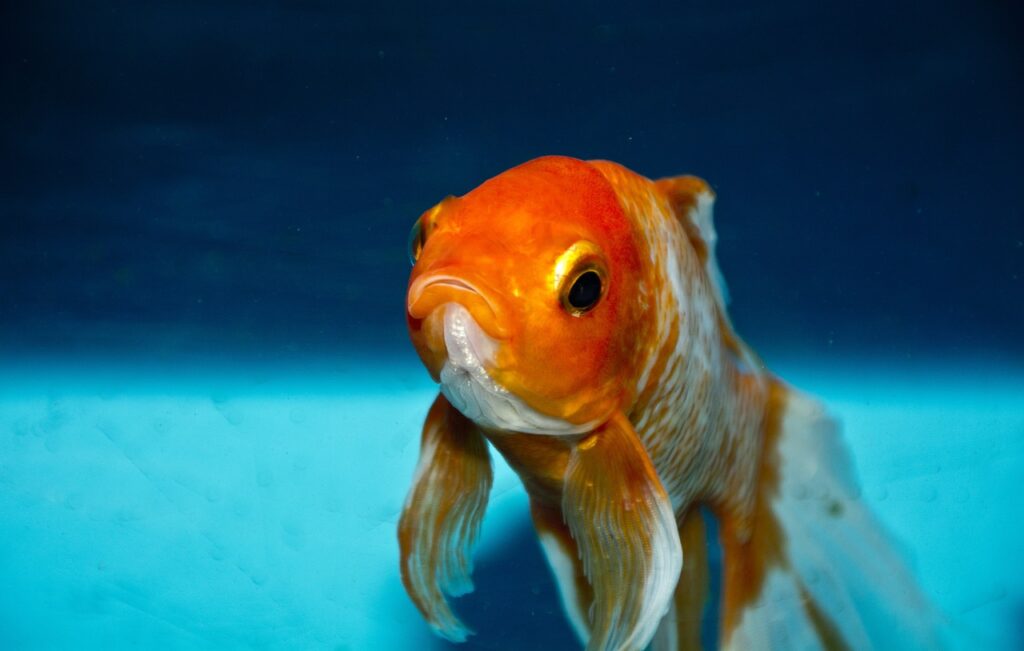
For those of us who love our finned friends, it’s critical to recognize when they’re swimming in troubled waters. Just like humans, goldfish can get stressed too.
Identifying Signs of Stress in Goldfish
Your goldfish telling you, “Hey, I’m stressed out here!” might be slightly outside the realm of possibilities. So, let’s learn to read their subtle, non-verbal cues instead. Things like rapid gill movements, loss of appetite, or a change in swimming patterns can indicate a stressed-out goldie. Also, if Goldie’s color is fading or she’s becoming more reclusive, it’s time for some fishy TLC.
How Transportation Can Cause Stress
Imagine being confined in a small space, jostled around, with no idea what’s happening – stressful, right? For goldfish, transportation can be a rattling experience too. The changes in water temperature and quality, along with the physical movements, can panic our poor little fishy friends. Can you blame them?
Now that you know the basics of goldfish stress, it’s time to dive deeper. In the next section, we will explore how to prepare your goldie for any journey, ensuring a smooth swim at every turn. Buckle your seatbelts (or should we say…tighten your tailfins?), because it’s time to dive into pre-transportation preparation!
Pre-Transportation Preparation
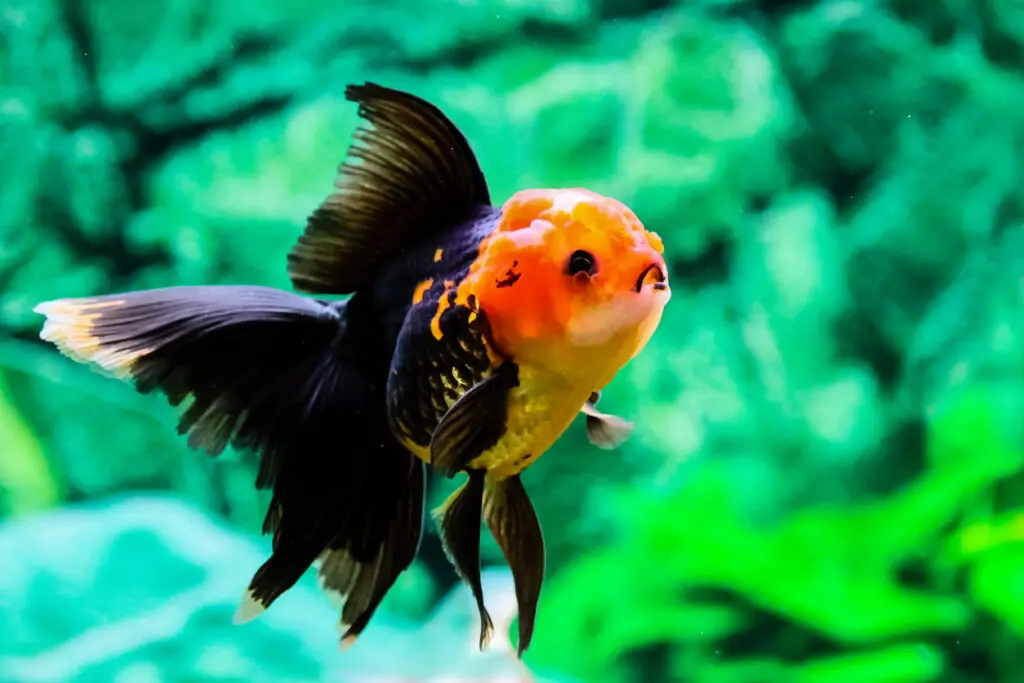
Before you buckle up your bubbly buddy for the grand voyage, a few preps are in order. Take a calm moment and let’s walk through them.
Choosing the Right Container for Transportation
The first step is selecting a suitable travel home for your goldie. Think of it as buying a mini RV for your fish. The container should be spacious, clean, and transparent. Ensure it has a secure lid to avoid any “Finding Nemo” episodes.
Ensuring Water Quality
The next step is setting up a hygienic mobile apartment for your pet. Fill the container with clean, dechlorinated water. Also, maintain a suitable temperature, hovering around the range your goldfish is used to. We don’t want them taking a “hot bath” or experiencing an “ice bucket challenge”.
Avoiding Overfeeding Before the Journey
Last, but not least, avoid feeding your golden buddy before the journey. A stuffed fish is a gassy fish. And trust me, you don’t want your pet turning its temporary home into a private fishy gas chamber.
Now the mood is set, your goldfish is ready for the road trip. But hold on, there are rules to follow during the journey. Stick around as we discuss the do’s and don’ts of goldfish transportation in the next section.
Goldfish Transportation Best Practices
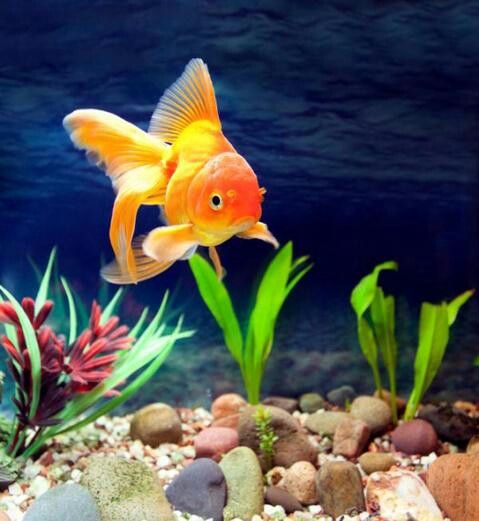
Just like humans, goldfish become grumpy when their comfort is compromised. So how do we make sure our favorite aquatic friends get first-class treatment? Welcome to the best practices for goldfish transportation.
Maintaining Temperature Stability
Imagine travelling through sudden shifts of hot and cold weathers, not the best picture, right? Well, your goldfish think the same. Constant temperatures offer them a vacation-like journey. Before you start your move, make sure to pack some water from their tank. This water isn’t just their favorite drink – it matches their preferred temperature. Use a thermos or insulated container. These are like mobile water heaters keeping your goldfish warm and comfy during the ride.
Avoiding Unnecessary Movements or Disturbances
To illustrate this point, let’s play a game. You sip a hot cup of coffee, put it on the dashboard, and now, navigate those bumpy roads. Difficult, right? That’s exactly how your goldfish feels during a turbulent ride. To avoid this, place the container in a stable part of your vehicle. The floor at the back of your seats would be perfect. Or, nestle it among soft items like blankets or pillows. Just remember the rule, the lesser the bumps, the happier the goldfish.
Monitoring Your Goldfish During Transportation
Goldfish don’t talk. (No brass instruments or singing crabs like in Disney, sadly.) But, they’re good at showing you how they feel. Check on them regularly during your journey. Be on the lookout for unusual patterns like too much hiding or erratic swimming. These are like their version of social media updates.
In following these best practices, you’re helping your goldfish enjoy a stress-free journey. This is just as important as their post-travel care, which we’ll cover next. So continue reading as we delve into the aftercare of these wonderful underwater creatures post-transportation.
Post-Transportation Steps
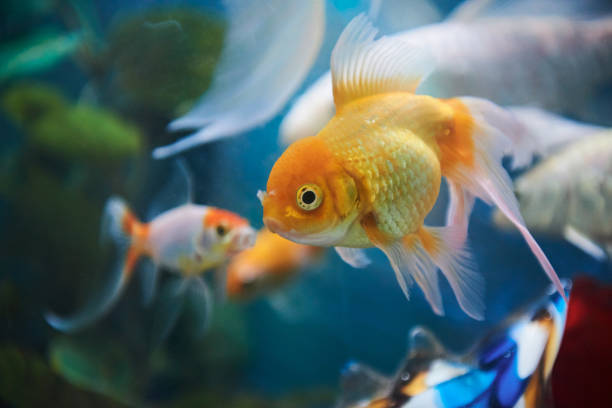
Just patted yourself on the back for a successful goldfish transportation? Hold your horses! While the journey may be over, the care is not. Your fish-tastic friends need to be carefully examined and eased back into their home environment.
Checking Goldfish Health Post-Journey
Fresh off their road trip, it’s time for your goldfish to undergo a mini health check-up. Give them a once-over, see if their scales are sparking as usual, and monitor if their swimming style seems offbeat (and not in a cool jazz way). Spy for any signs of stress – it’s no fun being the clique’s worrisome guppy.
Re-Acclimating Your Goldfish to Their Home Tank
Remember the first day at a new job, walking into a sea of unknown faces? That’s how your goldfish might feel, even if the tank is a familiar territory. Slowly introduce them back to their tank world by adding a bit of the tank’s water to their transport container, gradually adjusting them to the home environment’s temperature and water parameters.
What to Do If Your Goldfish Shows Signs of Stress Post-Transportation
Freaking out because your goldfish looks more stressed than a long-tailed cat in a room full of rocking chairs? Stay calm! Depending upon the symptoms, changing the water or adding some aquarium salt might just do the trick. Don’t hesitate to consult a vet if the signs persist – remember a little professional help never hurt anyone, least of all our orange friends.
Now that we’ve navigated the post-transportation waters, its time for a boatload of prevention advice to ensure smoother sailing during future fishy freights. Buckle up for some tips on easing transportation stress, planning for your travels and deciding when to seek expert help. We promise, it’s not like preparing for doomsday, but a walk in the park – or a swim in the tank!
Preventing Future Goldfish Transportation Stress
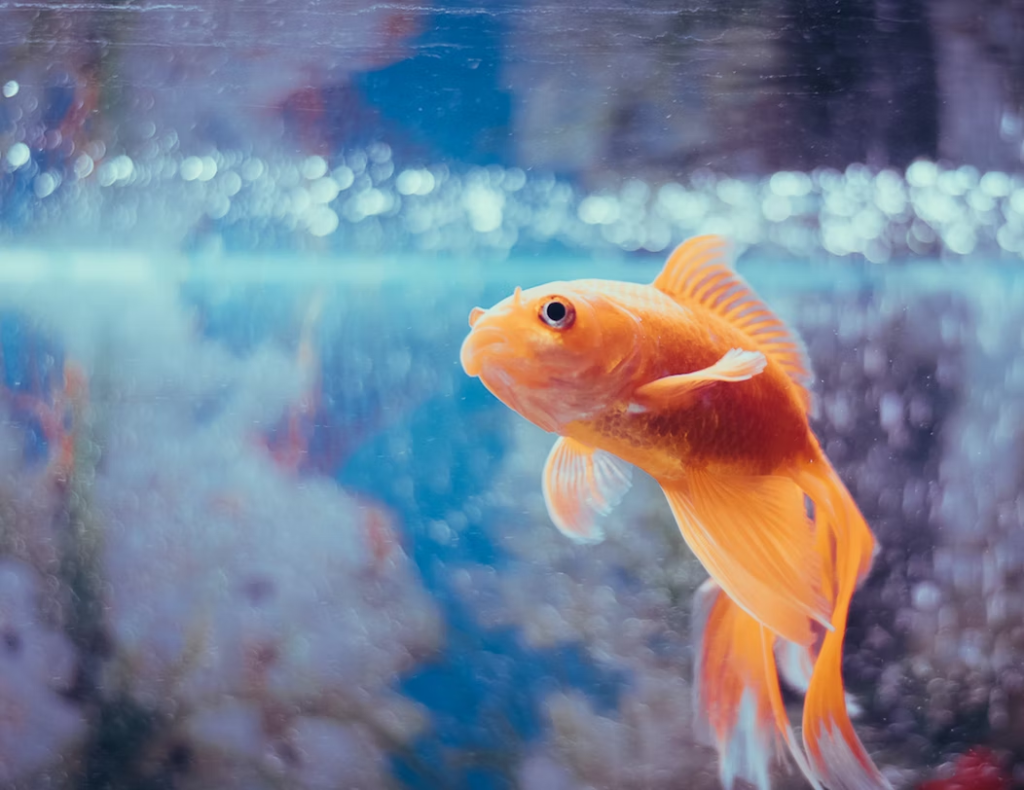
As the adage says, prevention is better than cure. This could not be more true when it comes to avoiding stress for your goldfish during transportation. Let’s explore proactive steps to create a stress-free journey for your golden buddies.
Planning and Preparing for Future Journeys
Think of the future when planning goldfish transport. For instance, if you know you will be moving house in the next five years, it might be prudent to get a portable and travel-friendly tank now. An investment today can mean less stress for your fish down the line. Practicing the relocation in your home itself helps too. This might seem over the top, but hey, our scaled friends deserve all the care we can provide!
Products and Tips to Ease Transportation Stress
When it comes to reducing goldfish stress, there are plenty of nifty products available. Stress coats, water conditioners, and battery-powered air pumps can all play a role in making the journey smoother. These tools are just like in-flight amenities for your fish—think of them as free headphones and blankets in economy class. Which fish wouldn’t feel like a VIP?
When to Consult a Vet Regarding Transportation Stress
We all wish to be the ‘Dr. Dolittle’ of the aquatic world, but sometimes, it’s best to entrust fish health to trained professionals. If you notice continued signs of stress in your goldfish post-transportation, a visit to the vet might be in order. Remember, a vet visit is like calling tech support for your IT issues—only this time, the ‘IT’ is your goldfish.
And there you have it—the ultimate guide to goldfish transportation. So, are you ready for the journey? Just remember that while on the road, home is wherever your fish tank is. Safe travels, my friend, and may your goldfish journeys be blip-less.
Wrap Up
Understanding your goldfish’s stress before transporting is as pivotal as the journey itself. Keep a keen eye on their stress signals, and selecting apt transportation casseroles, you’re ensuring their comfort even on a bumpy ride.
Post journey, keep the waters calm by checking on their health and recreating their native tank climate. If signs of stress persist, do not hesitate to ring up your friendly local vet. Lastly, remember that prevention is better than cure. With proper planning and the right stress reduction tools, your goldfish will be ready to surf the currents of any journey, stress-free!
Frequently Asked Questions (FAQ)
Question: What are the signs of stress in a goldfish?
Answer: Clamped fins, loss of appetite, gasping at the surface, rapid gill movement, and glass surfing are all signs of stress in goldfish.
Question: How can transportation cause stress in goldfish?
Answer: Changes in temperature, water quality, and the shaking and vibrations during transport could all contribute to transportation stress.
Question: What kind of container should I use for transporting my goldfish?
Answer: A sturdy, clean container with a tight-fitting lid. Size of the container depends on the size of your fish and the duration of the journey.
Question: What should be the water quality during transportation?
Answer: Use dechlorinated water that matches the temperature of the goldfish’s home tank to prevent abrupt changes in temperature that can stress goldfish.
Question: Why should I avoid overfeeding my goldfish before transportation?
Answer: Goldfish release waste into their water, which could disproportionately pollute a small transport container. Overfeeding ahead of transport only serves to exacerbate this issue.
Question: How do I maintain temperature stability during transportation?
Answer: Use an insulated container, and avoid leaving your goldfish in extremely cold or hot environments, such as a parked car.
Question: What steps should be taken post-transportation?
Answer: Check for signs of stress, then slowly acclimate your goldfish back into its home tank. If stress continues, consult a vet.
Question: What products can help ease transportation stress?
Answer: Stress-coat products, portable heaters for longer trips, and travel-safe fish bags can all contribute to a smoother journey.
Question: How can I know if I need to consult a vet after transportation?
Answer: If your goldfish shows prolonged signs of stress (like loss of appetite or abnormal behavior) after you’ve tried to re-acclimate it to its home tank, you should consult a vet.

